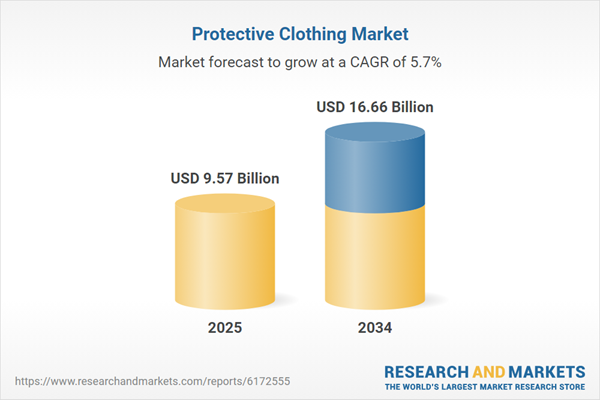Growing Industrialisation to Cater to the Growth of Protective Clothing Industry
The growth of protective clothing industry could be attributed to an improvement in the economic climate and a boom in industrialisation worldwide. Industries use protective gear to safeguard their employees. With the rising pace of industrialisation, the number of production processes and policies has significantly risen, which has led to the development of special protective clothing for personal protection equipment undertakings in order to provide the highest level of health for employees.In developed and developing countries, the majority of the economies have put organised industrial growth strategies into practise. Over the previous years, new techniques have been developed rapidly. Industrial expansion is expected to increase the demand for protective gear and, thus boosting the market for protective clothing.
As COVID-19 expanded internationally, government efforts to develop and respond to the need for PPE have attained unprecedented heights. National storage plans by the concerned nations continued to boost the need for the protective clothing industry.
Protective Clothing: Market Segmentation
Protective clothing is all apparel intended, treated or manufactured to safeguard workers from dangers induced by extreme environmental or harmful working circumstances and scenarios.The major material types of protective clothing are:
- Aramid and Blends
- Polyolefin and Blends
- Polybenzimidazole (PBI)
- Cotton Fibres
- Laminated Polyesters
- Others
The market can be broadly categorised on the basis of its applications into:
- Thermal
- Mechanical
- Chemical
- Biological/Radiation
- Others
The division on the basis of end-use industry is:
- Oil and Gas
- Construction and Manufacturing
- Pharmaceuticals/Medical
- Military and Defence
- Firefighting
- Others
Breakup by Region
- North America
- Europe
- Asia-Pacific
- Latin America
- Middle East and Africa
Growing Demand for Multi-Performing Protective Clothing to Boost the Industry Growth
A range of needs is met by multi-functioning durable protective gear. The wearer may be protected from one or more dangers by protective clothes. These may include mechanical impact protection, physical damage, heat/fire, cold temperatures, rain, electrical shock, radiation, invisibility and poisonous chemicals and infectious agents. In recent years, a great deal of attention has been paid to the design of novel textiles with multifunctional activities and property in order to improve the characteristics of materials for various purposes.As conventional protective garments provide obstacles, such as heavy weight, bulky nature, mobility deficiency, thermal stress, limited thermal dissipation, physical stress, decreased dexterity, etc. Credits to the remarkable qualities of the textiles that are enhanced with advanced materials that can be an efficient way to overcome these limits and to increase features like mechanical strength, anti-bacterial activity, flame resistance, conductivity, and UV power. These features being incorporated in protective clothing have positively impacted the growth of the industry.
Key Industry Players in the Global Protective Clothing Market
The report presents a detailed analysis of the following key players in the global protective clothing market, looking into their capacity, market shares, and latest developments like capacity expansions, plant turnarounds, and mergers and acquisitions:- DuPont de Nemours, Inc
- Glen Raven, Inc.
- Koninklijke Ten Cate B.V.
- Lakeland Industries Inc.
- 3M Company
- Others
Table of Contents
Companies Mentioned
The key companies featured in this Protective Clothing market report include:- DuPont de Nemours, Inc.
- Glen Raven, Inc.
- Koninklijke Ten Cate B.V.
- Lakeland Industries Inc.
- 3M Company
Table Information
| Report Attribute | Details |
|---|---|
| No. of Pages | 154 |
| Published | August 2025 |
| Forecast Period | 2025 - 2034 |
| Estimated Market Value ( USD | $ 9.57 Billion |
| Forecasted Market Value ( USD | $ 16.66 Billion |
| Compound Annual Growth Rate | 5.7% |
| Regions Covered | Global |
| No. of Companies Mentioned | 6 |









